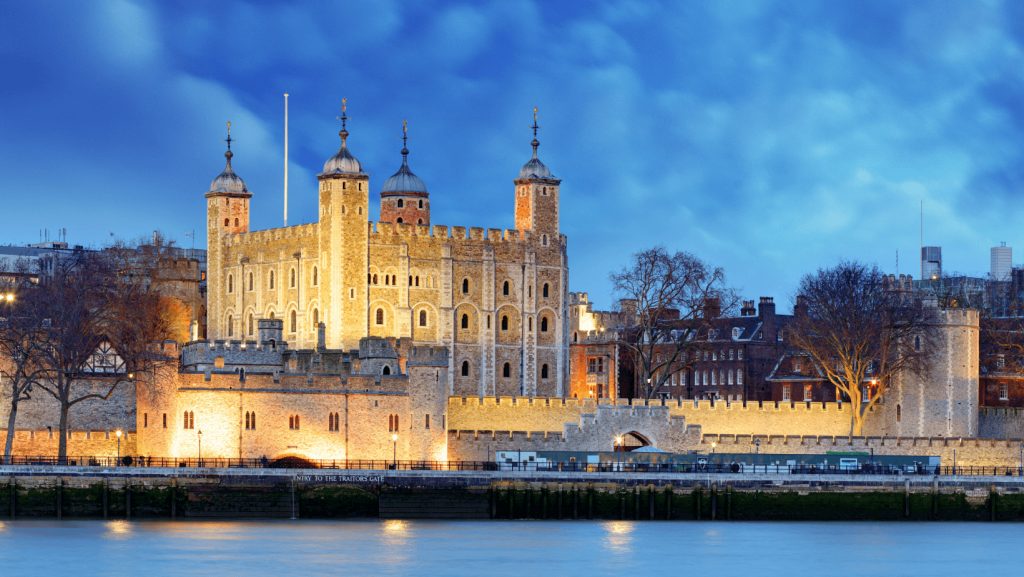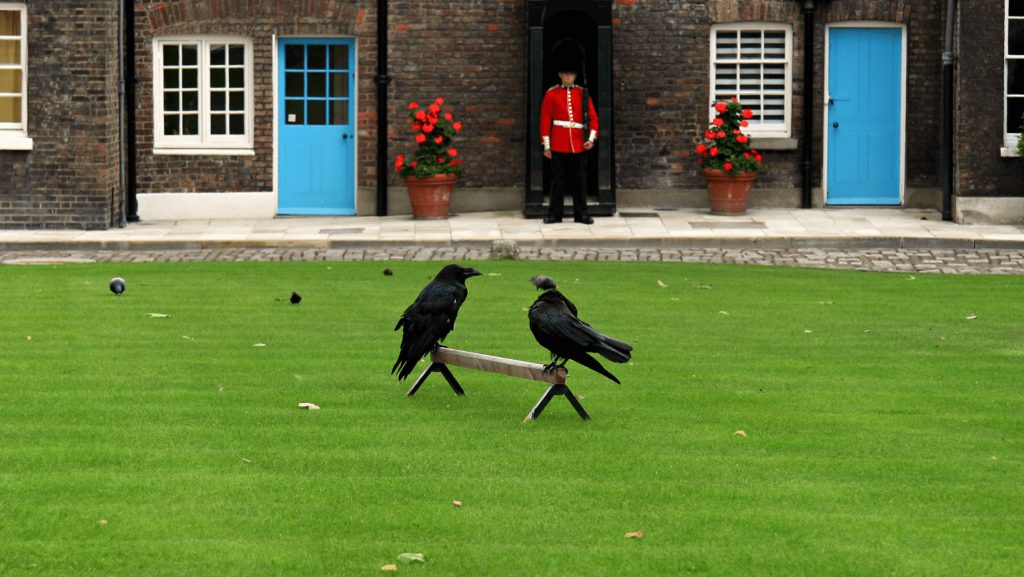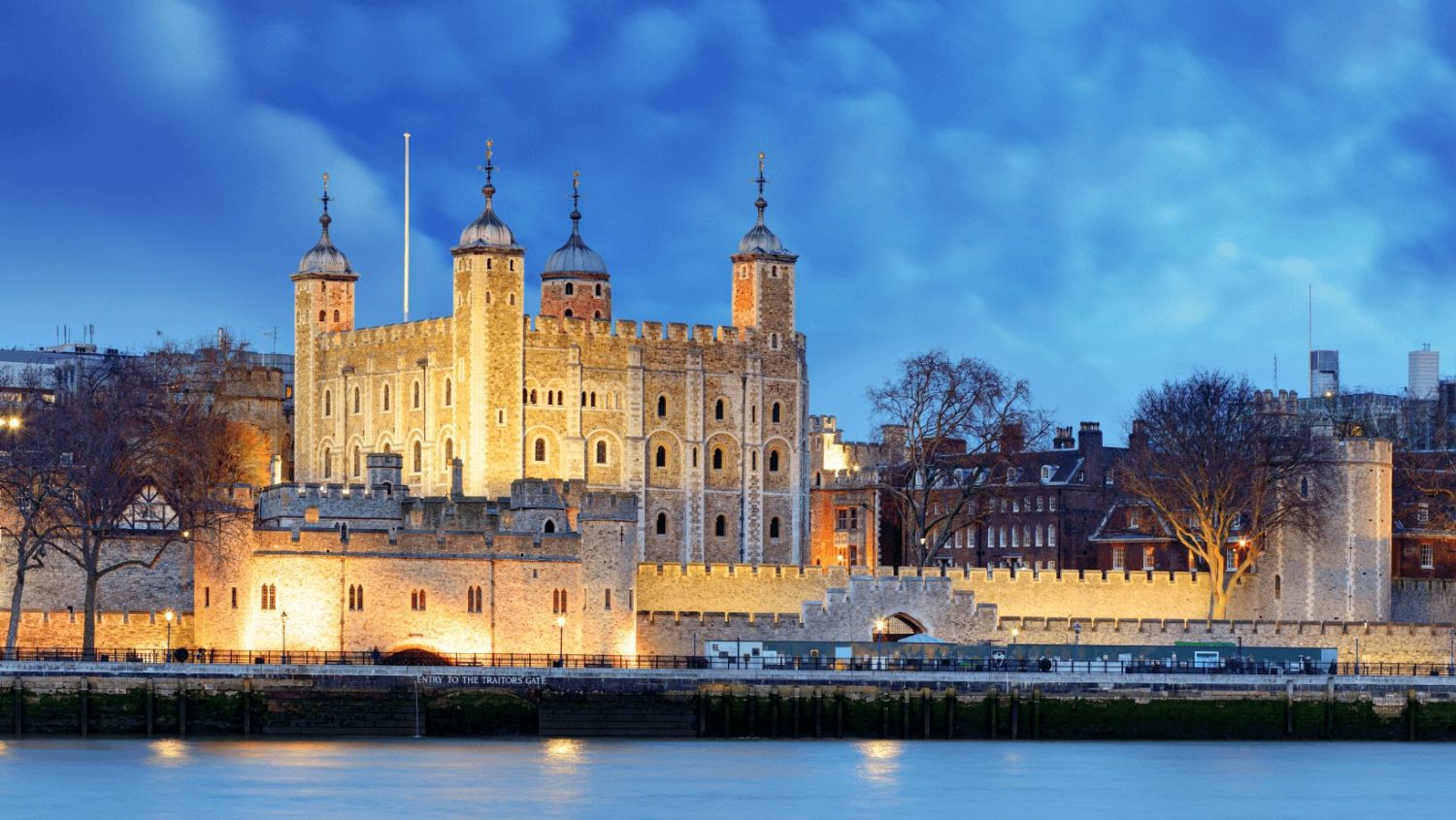
Early Usage Of The Tower of London
The oldest structure in the Tower of London complex is known as the “White Tower,” named for the white limestone that was imported from Caen for its construction. The White Tower was completed around 1100. It was initially designed as a battlement to protect the city, but it didn’t take long for it to find use as a prison. When King Henry I assumed the throne in 1100, one of his first acts was to order the arrest of Rannulf Flambard, the Bishop of Durham. Flambard was charged with simony, the act of selling administrative positions in the church. He became the first prisoner held in the Tower of London, though he later escaped.
Subsequent monarchs continued to add to the Tower of London complex, expanding its uses. The Bell Tower was completed in 1210, and as the name suggests, the bell at the top of the tower was rung to warn of emergencies. Ten years later, construction began on the Wakefield and Lanthorn Towers. Lanthorn is the Old English spelling of the present-day word “lantern,” which speaks to the new tower’s purpose. At night, a lantern was placed on top of the Lanthorn Tower to help guide ships entering the River Thames and the historic port of London.
The strategic placement near the river lent itself to many of the uses of the Tower. But other functions were placed there due to its extensive security. Since 1485, security at the Tower of London complex has been maintained by a special order of guards, the Yeomen Warders, commonly known as “the Beefeaters.” This nickname is allegedly based on a comment from an Italian nobleman in the 17th century, who remarked that the members were given a large daily ration of beef. Some may also recognize the term Beefeater as the name of a popular brand of gin that takes its name from the security forces.

Torture in the Tower of London
Today, the Tower of London is most well known for its macabre history as a prison. However, not all prisoners were subject to cruel conditions. Wealthy inmates were often provided with luxurious accommodations and some were even allowed to leave on hunting trips. Scottish King John Balliol is one example of such a prisoner. When he was imprisoned at the Tower for three years, he was allowed to bring his servants, hunting dogs, and wife with him.
Despite the Tower’s reputation, only a small fraction of inmates were actually tortured, primarily during the 16th and 17th centuries. When it was employed, torture was used to obtain information rather than as a punishment in itself. The rack was the most widely used instrument of torture, designed to stretch the victim’s body, eventually dislocating the limbs from their sockets. Less commonly used, the Scavenger’s Daughter was a device that had the opposite effect, compressing the victim’s body into painful positions. Guy Fawkes is perhaps the most famous prisoner tortured at the Tower of London, following the Gunpowder Plot of 1605.
While torture was relatively rare, executions were much more common. Throughout the Tower’s history, prisoners have been executed using a variety of methods including beheading, firing squad, and hanging. Many notorious executions at the Tower of London occurred at the hand of King Henry VIII. Sir Thomas More was beheaded after refusing to recognize King Henry VIII as the head of the Church of England. And later, King Henry VIII famously ordered the executions of his second wife, Anne Boleyn, and his fifth wife, Catherine Howard, which were also carried out at the Tower of London.

Modern Operations
The Tower of London has operated as a tourist attraction since the late 19th century. However, it has returned to its roots on several occasions since then. During World War I, 11 German spies were executed at the Tower of London. The facility also served as a prison during World War II, and Hitler’s second in command, Rudolf Hess was incarcerated there in 1941 after he was captured in Scotland. In August 1941, German spy Josef Jakobs became the last person to be executed at the Tower.
Since World War II, the Tower of London has returned to its operations as a tourist destination with a number of exhibits for guests to explore. One of the highlights visitors can see is the Crown Jewels, a symbol of the British Monarchy. The impressive collection includes a total of 23,578 gemstones, fittingly housed in the Jewel House. The Crown Jewels are a popular attraction in themselves, and it’s estimated that over 30 million people have seen them in their present setting at the Tower.
The complex is also home to several famous ravens, known as the guardians of the Tower. According to a legend that dates back to King Charles II, it’s said that the kingdom and the Tower of London will fall if the six resident ravens ever leave the fortress. Today, seven ravens named Jubilee, Harris, Gripp, Rocky, Erin, Poppy, and Georgie make their home at the Tower. They are free to roam during the day and a Ravenmaster is employed to care for the guardians of the Tower.

